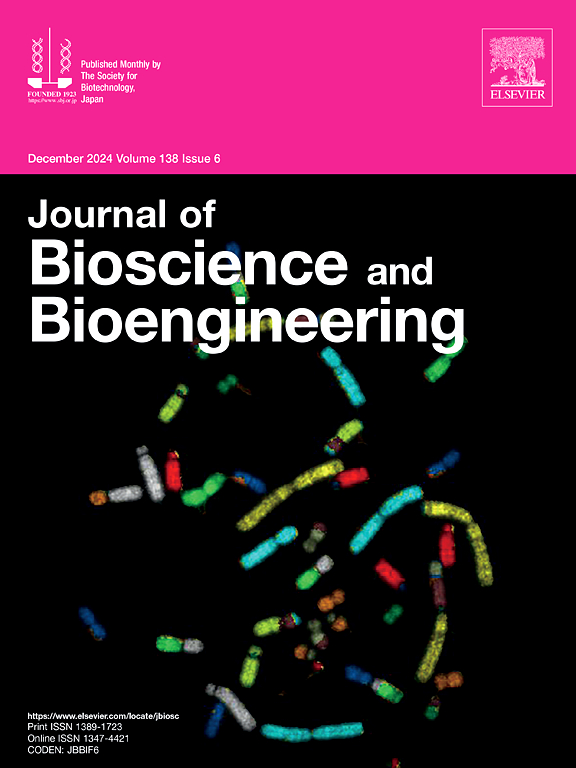Controlling the carbon flux between glycolysis and the pentose phosphate pathway via targeted protein degradation in Corynebacterium glutamicum
IF 2.9
4区 生物学
Q3 BIOTECHNOLOGY & APPLIED MICROBIOLOGY
引用次数: 0
Abstract
Controlling the carbon flux is important for efficient production of value-added chemicals using microbial cell factories. In this study, we developed a system to control the carbon flux in Corynebacterium glutamicum via targeted protein degradation. We employed an SspB-dependent protein degradation system targeting the SsrA tag and applied it to control the carbon flux. First, we selected a degradation tag efficiently recognized by the ClpXP protease in C. glutamicum using green fluorescent protein (GFP) as a model protein. Among the four tags examined in this study, a mutant SsrA tag with DAS residues from Escherichia coli resulted in specific GFP degradation only when the adaptor SspB was induced in C. glutamicum. Next, we applied this system to control the carbon flux. We selected phosphoglucoisomerase (PGI) encoded by pgi, as a target protein, to control the carbon flux between glycolysis and pentose phosphate pathway (PPP) and 1,5-diaminopentane as a model product to evaluate this control system. Compared with the parental strain, the specific growth rate of the engineered strain decreased by 36 %, whereas the yield and production rate of 1,5-diaminopentane increased by 193 % and 70 %, respectively. This is the first report on the application of a protein degradation system to control carbon flux in C. glutamicum. The system developed in this study can be widely applied for designing C. glutamicum cell factories for efficient production of varied value-added chemicals.

谷氨酸棒状杆菌通过靶向蛋白降解控制糖酵解和戊糖磷酸途径之间的碳通量。
控制碳通量对于利用微生物细胞工厂高效生产增值化学品具有重要意义。在本研究中,我们开发了一个通过靶向蛋白降解来控制谷氨酸棒状杆菌碳通量的系统。我们采用sspb依赖性蛋白降解系统靶向SsrA标签,并应用它来控制碳通量。首先,我们以绿色荧光蛋白(green fluorescent protein, GFP)作为模型蛋白,选择了谷氨酰胺ClpXP蛋白酶能有效识别的降解标签。在本研究检测的四个标签中,只有在C. glutamum中诱导适配器SspB时,带有大肠杆菌DAS残基的突变体SsrA标签才能产生特异性的GFP降解。接下来,我们将该系统应用于碳通量的控制。我们选择由PGI编码的磷酸糖异构酶(PGI)作为控制糖酵解和戊糖磷酸途径(PPP)之间碳通量的靶蛋白,并以1,5-二氨基戊烷为模型产物,对该控制系统进行了评价。与亲本菌株相比,工程菌株的特定生长率降低了36%,而1,5-二氨基戊烷的产量和产出率分别提高了193%和70%。本文首次报道了蛋白质降解系统在谷氨酰胺碳通量控制中的应用。本研究开发的系统可广泛应用于谷氨酰胺细胞工厂的设计,以高效生产各种高附加值化学品。
本文章由计算机程序翻译,如有差异,请以英文原文为准。
求助全文
约1分钟内获得全文
求助全文
来源期刊

Journal of bioscience and bioengineering
生物-生物工程与应用微生物
CiteScore
5.90
自引率
3.60%
发文量
144
审稿时长
51 days
期刊介绍:
The Journal of Bioscience and Bioengineering is a research journal publishing original full-length research papers, reviews, and Letters to the Editor. The Journal is devoted to the advancement and dissemination of knowledge concerning fermentation technology, biochemical engineering, food technology and microbiology.
 求助内容:
求助内容: 应助结果提醒方式:
应助结果提醒方式:


